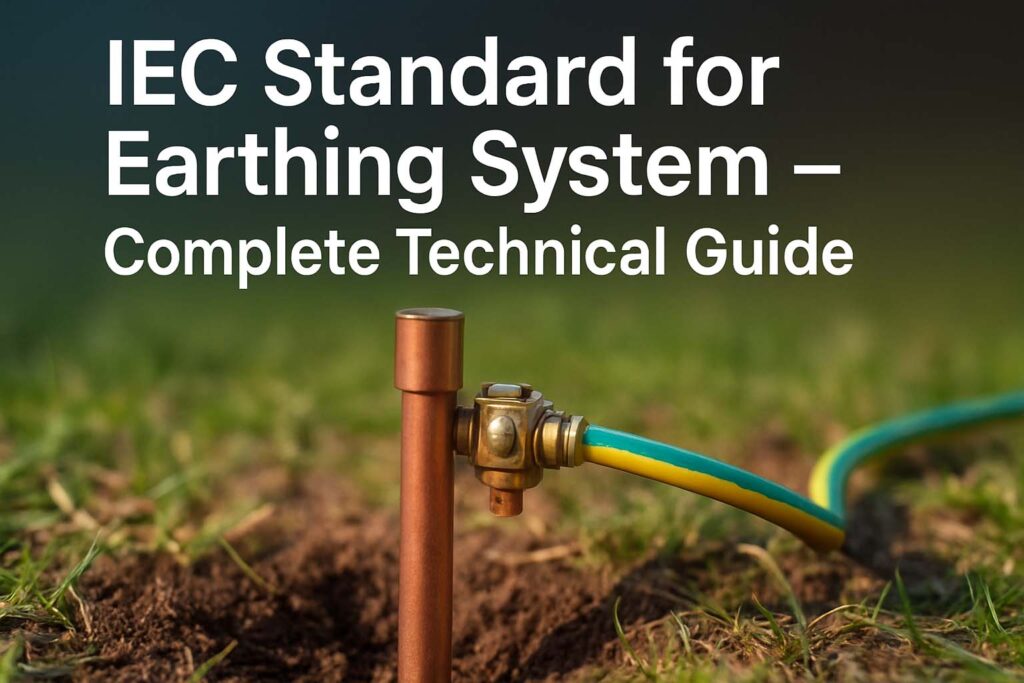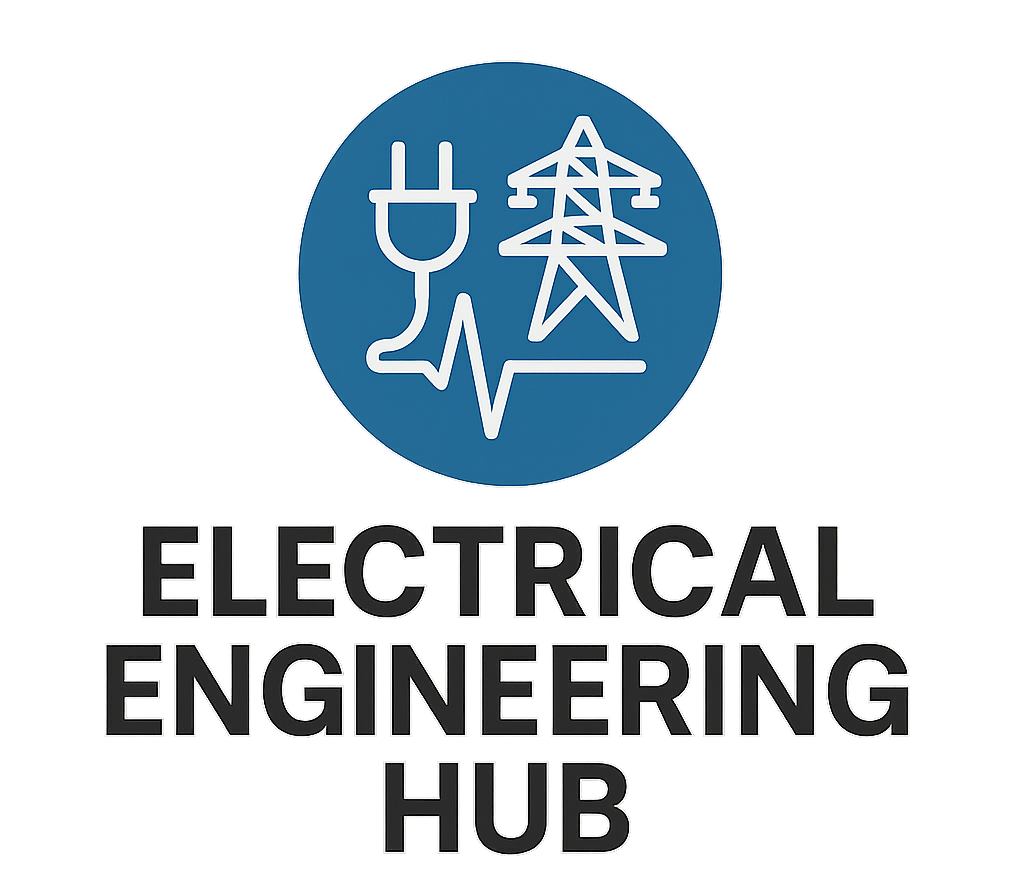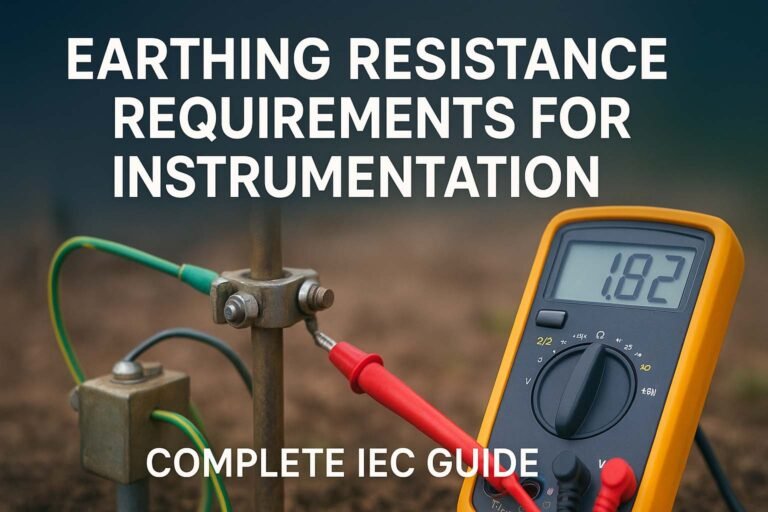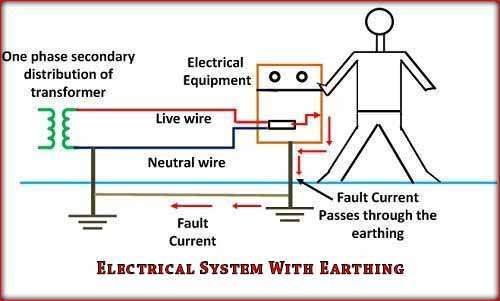IEC Standard for Earthing System – Complete Technical Guide
Earthing is one of the most critical aspects of electrical safety and reliability. Every electrical installation, from small homes to large industrial plants, requires a proper earthing arrangement to ensure safety of people, equipment, and the overall power system. The IEC standard for earthing system provides a globally recognized framework for designing, implementing, and maintaining safe earthing practices. Without proper adherence to standards, risks such as electric shocks, equipment failure, fire hazards, and unstable power quality become significant.
Table of Contents
Table of Contents

The International Electrotechnical Commission (IEC) has issued several standards that define how earthing systems should be designed and maintained. Among them, IEC 60364 is the most widely used reference. It covers low-voltage installations and prescribes requirements for earthing conductors, grounding electrodes, fault current paths, and bonding methods. In practice, understanding and applying these guidelines ensures not only compliance but also long-term reliability of electrical networks.
Before diving into technical details, it is essential to understand that earthing is not just about connecting a wire to the soil. It is a complete system designed to provide a controlled low-resistance path for fault currents, equalize potential differences, and protect both human life and electrical equipment. The IEC standard for earthing system ensures that every aspect of this protection is clearly defined and technically sound.
Key Takeaways
- IEC standard for earthing system defines global safety requirements for grounding in electrical installations.
- Proper earthing reduces the risk of shock, fire, and equipment failure by providing a safe fault current path.
- IEC 60364, IEC 62305, and IEC 61936 are the main references for grounding requirements in low, medium, and high-voltage systems.
- Choosing the correct earthing type (TN, TT, IT) is essential for both design safety and regulatory compliance.
- Technical parameters like earth resistance, conductor size, and electrode type must comply with IEC limits.
Know more about Earth Ground Testing: Clamp Meter vs Fall-of-Potential Method
Importance of IEC Standard for Earthing System
The primary goal of earthing is safety. When a fault occurs in a system, such as a short circuit or insulation breakdown, dangerous voltages can appear on equipment surfaces. The IEC standard for earthing system requires that these voltages be quickly discharged to the ground to protect human life.
Another critical role of earthing is the stability of the electrical system. Without proper grounding, sensitive equipment such as computers, sensors, and control systems can malfunction due to voltage fluctuations or electromagnetic interference. Industrial automation plants, data centers, and renewable energy systems depend heavily on stable grounding as per IEC guidelines.
Furthermore, earthing ensures proper operation of protective devices like fuses, miniature circuit breakers (MCBs), and residual current devices (RCDs). IEC standards specify that fault currents should be high enough to trigger these devices rapidly, ensuring disconnection within defined time limits.
IEC Standard for Earthing System – Core References
Several IEC standards provide detailed requirements for earthing. The most important among them are:
- IEC 60364 – Electrical Installations for Buildings (Low Voltage Earthing)
- IEC 62305 – Lightning Protection and Earthing
- IEC 61936-1 – Power Installations Exceeding 1 kV AC (High Voltage Earthing)
- IEC 61024 & IEC 60364-5-54 – Specific guidelines for earthing conductors and arrangements
Each standard addresses different voltage levels, application areas, and environmental conditions. For general electrical installations, IEC 60364 remains the baseline document for engineers.
Know more about Grounding vs Bonding: Key Differences Explained
Types of Earthing Systems Defined in IEC Standards
The IEC standard for earthing system categorizes earthing arrangements into three main types. These are essential to understand for any installation, as the type chosen impacts both safety and protection strategy.
TN System
In the TN system, the neutral point of the supply is directly connected to earth. Equipment exposed conductive parts are connected to this neutral through protective earth (PE) conductors. It is widely used in Europe and industrial applications. The TN system is further divided into:
- TN-S (separate neutral and protective conductor)
- TN-C (combined neutral and protective conductor)
- TN-C-S (combined in part of the system, separated elsewhere)
TT System
In a TT system, the consumer provides its own earth electrode independent of the supply network. Protective devices like RCDs are essential here because fault currents are usually low. TT systems are often used in rural or remote areas.
IT System
In IT systems, the supply is isolated from earth or connected through high impedance. Exposed conductive parts are earthed individually. IT systems are common in hospitals, mines, and industrial plants where continuity of supply is critical.
Comparative Table – Earthing Types as per IEC
| Earthing Type | Neutral Connection | Protective Earth Path | Application Area | Fault Protection Method |
|---|---|---|---|---|
| TN-S | Neutral earthed at source | Separate PE conductor | Industry, Europe, data centers | Breakers, fuses |
| TN-C | Neutral and PE combined | Shared conductor | Low-cost systems, older installations | Breakers, fuses |
| TN-C-S | Combined and separate mix | Shared then split | Utility distribution, homes | Breakers, RCDs |
| TT | Independent earth electrode | Local PE electrode | Rural, remote, renewable systems | RCDs required |
| IT | Isolated or high impedance | Individual PE electrode | Hospitals, critical industries | Insulation monitoring |
Know more about Earthing Transformer Working Principle
Technical Parameters in IEC Standard for Earthing System
The IEC standard for earthing system specifies several measurable parameters to ensure reliability and safety.
Earth Resistance:
IEC recommends earth resistance below 1 ohm for power stations and substations. For residential and commercial systems, less than 5 ohms is acceptable.
Conductor Sizing:
According to IEC 60364-5-54, earthing conductors must be sized based on fault current capacity, conductor material, and duration of the fault. Copper is the most common material due to its high conductivity.
Electrode Material and Shape:
Electrodes can be rods, pipes, strips, or plates. IEC allows galvanized steel, copper, or copper-bonded steel. The design depends on soil resistivity and installation space.
Soil Resistivity Considerations:
Soil resistivity has a major impact on earthing performance. IEC requires site measurement before design. In high resistivity soils, multiple electrodes or chemical earthing may be used.
Protective Device Coordination:
IEC standards link earthing to the operation of protective devices. For example, RCDs must trip within 30 ms at 30 mA leakage current to protect human life.
Earthing in Industrial and High Voltage Installations
While residential earthing can be relatively simple, industrial and high-voltage systems demand more complex designs. The IEC standard for earthing system for high voltage (IEC 61936-1) requires earth grids with mesh arrangements around substations. These grids prevent dangerous step and touch voltages during faults.
Know more about Grounding Cable Size as Per NEC
In renewable energy plants such as solar farms and wind parks, IEC 60364 and IEC 62305 must be applied together. Proper lightning protection, combined with low-resistance grounding, ensures both human safety and equipment durability.
Best Practices for Implementing IEC Standard for Earthing System
- Conduct soil resistivity tests before design.
- Select electrode type and size according to IEC guidelines.
- Ensure bonding of all metallic non-current carrying parts.
- Use corrosion-resistant materials like copper-clad rods.
- Verify earth resistance regularly using proper testing instruments.
- Ensure coordination between grounding system and protective devices.
Common Mistakes to Avoid
Even with IEC standards in place, many installations fail because of poor practices. Some common mistakes include:
- Using undersized earthing conductors.
- Relying on a single rod in high resistivity soil.
- Lack of bonding between metallic enclosures and PE conductors.
- Ignoring regular maintenance and resistance testing.
- Installing earthing without proper documentation or compliance verification.
Benefits of Following IEC Standard for Earthing System
- Safety: Protects human life from electric shocks and step voltages.
- Reliability: Ensures stable operation of sensitive equipment.
- Compliance: Meets international safety regulations, reducing liability.
- Longevity: Minimizes equipment damage from faults and surges.
- Cost Saving: Reduces downtime, failures, and insurance claims.
Know more about Earth Cable Size for Bonding
Conclusion
The IEC standard for earthing system is not just a set of recommendations; it is the foundation of electrical safety and system reliability. Whether in residential, commercial, or industrial installations, proper grounding ensures that fault currents have a safe path, protective devices work effectively, and equipment operates reliably. By following IEC 60364, IEC 61936, and IEC 62305, engineers and installers can design systems that comply with global best practices.
Follow Us on Social:
Subscribe our Newsletter on Electrical Insights for latest updates from Electrical Engineering Hub
#IECEarthingStandard, #EarthingSystem, #ElectricalSafety, #GroundingSystem, #IECStandards, #ElectricalEngineering, #EarthingProtection, #IndustrialSafety, #PowerSystemProtection, #ElectricalDesign, #GroundingSafety, #TechnicalGuide, #IEC60364, #ElectricalCompliance, #SafeEarthing




